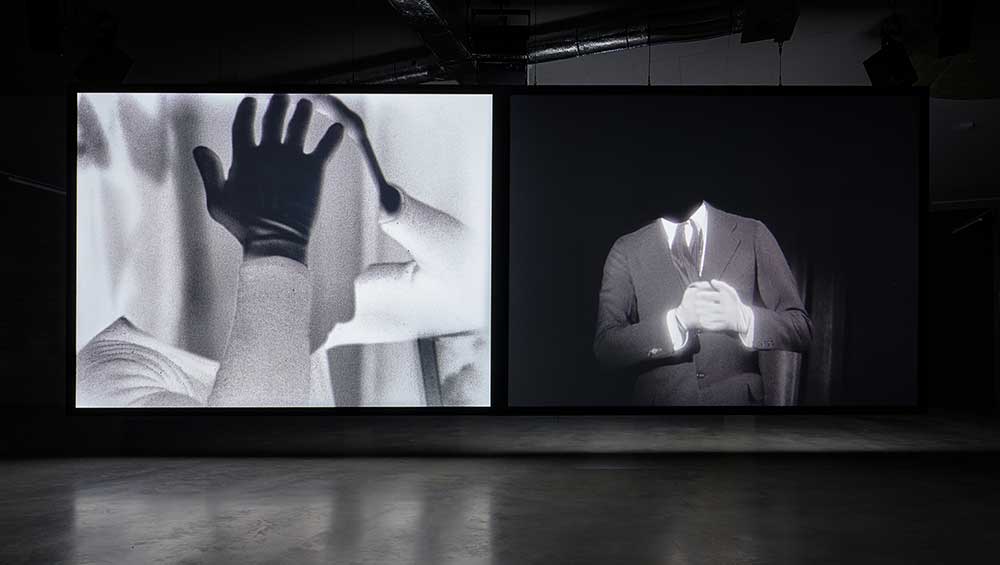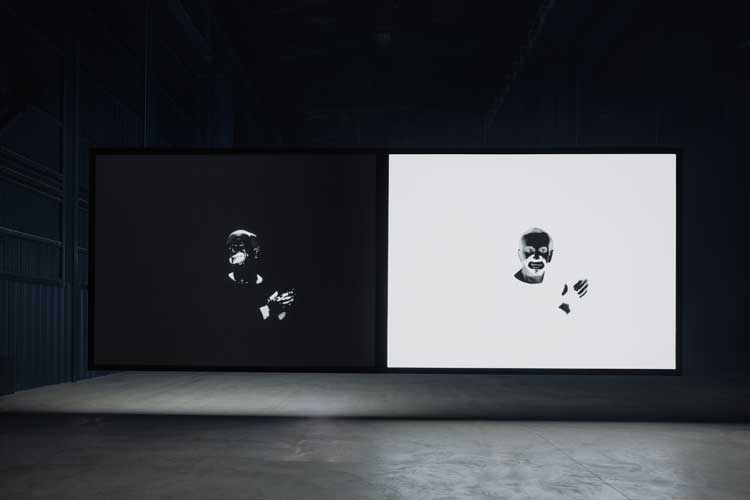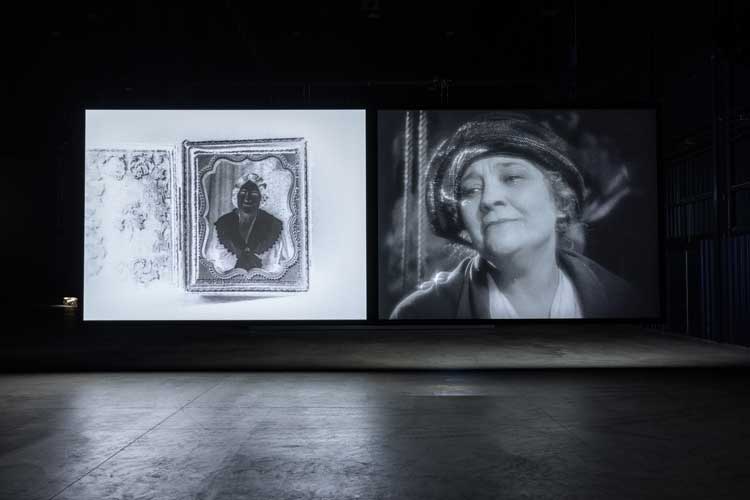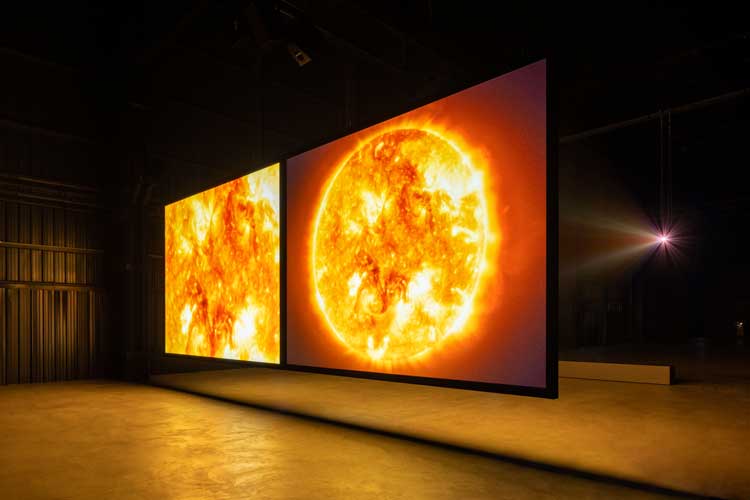
Sunshine State © Steve McQueen. Courtesy the artist, Thomas Dane Gallery and Marian Goodman Gallery. A Commission for International Film Festival Rotterdam 2022.
Depot Boijmans Van Beuningen, Rotterdam
26 January – 12 February 2023
by ALLIE BISWAS
After he encountered The Jazz Singer two decades ago, it was immediately clear to Steve McQueen that this 1927 musical drama, which effectively marked the end of the era of silent films in Hollywood, would be useful to him. The feature-length production, which was later selected for preservation in the US National Film Registry, centres around Jakie Rabinowitz, a young man who defies the expectations of his devout Jewish family. His father’s desire for him to become a hazzan at the local synagogue, continuing a generations-old family tradition, collides with Jakie’s taste for singing pop tunes in a beer garden, for which he is punished, resulting in him running away from home. It proves a worthwhile move for Jakie: attempts to establish a career as an entertainer are fruitful and he eventually builds a name for himself in New York, as a jazz singer who performs in blackface.
The film’s plot is based on a 1925 play by native New Yorker Samson Raphaelson, who nearly 10 years earlier had attended a musical starring Al Jolson, a Lithuanian-born Jew who was arguably the biggest star of the vaudeville scene in the 1920s. Jolson had adopted blackface as part of his routine in 1904, with the idea of energising his image, and, finally, making his mark. He went on to develop a knack for incorporating African American musical genres, such as jazz and ragtime, into his groundbreaking vocal style, which one critic later described as “arguably the single most important factor in defining the modern musical”. In the film, Jakie is played by Jolson.

Sunshine State © Steve McQueen. Courtesy the artist, Thomas Dane Gallery and Marian Goodman Gallery. A Commission for International Film Festival Rotterdam 2022.
McQueen’s handling of this historical material is presented as a two-channel video projection, installed at the recently opened Depot Boijmans Van Beuningen, which made its debut at the 52nd edition of the Rotterdam Film Festival. Various narratives from The Jazz Singer are conveyed through clips that include Jakie rehearsing before the grand performance that marks the film’s finale, a ceremony that takes place at a synagogue, and appearances by Jakie’s mother, who remains faithful to her son despite the altercation with his father.
McQueen’s editing of these scenes results in the removal and reappearance of Jakie’s head, which is conducted through gradual steps that either eliminate or rebuild the character’s face. It is a compelling technical device that alludes to the process of self-erasure and the wider context of being made to feel invisible, as well as to the ability to self-materialise and reconstruct. It would be difficult not to associate McQueen’s stripping away of Jakie’s facial features with the burnt-cork makeup that Jakie, as well as Jolson, applies (although The Jazz Singer is documented as depicting a fictional story, Raphaelson stated that his play was based on real accounts taken from Jolson’s own life, essentially making the two characters interchangeable).

Sunshine State © Steve McQueen. Courtesy the artist, Thomas Dane Gallery and Marian Goodman Gallery. A Commission for International Film Festival Rotterdam 2022.
These black-and-white scenes are paused at intervals by colour images of the sun: a blazing, neon sphere that dominates the screen. We begin to hear McQueen in voiceover, who recounts something that his father told him for the first time, shortly before he died. It is a bleak story, in which a move from the West Indies to Florida as a young man, to take a job picking oranges, ends in startling violence and trauma. This isn’t quite the sunshine state we were anticipating.
McQueen recorded the short narrative in just a couple of takes, which allows his genuine dismay to be vocalised. In a press conference, he described the process of documenting the story on tape as “heavy”, repeating the word multiple times, while also speaking about the relief that he felt after doing so. Synchronising this incident with the father-son relationship that frames The Jazz Singer, Sunshine State perhaps most strongly aligns itself with the possibility of survival, despite the stakes.

Sunshine State © Steve McQueen. Courtesy the artist, Thomas Dane Gallery and Marian Goodman Gallery. A Commission for International Film Festival Rotterdam 2022.